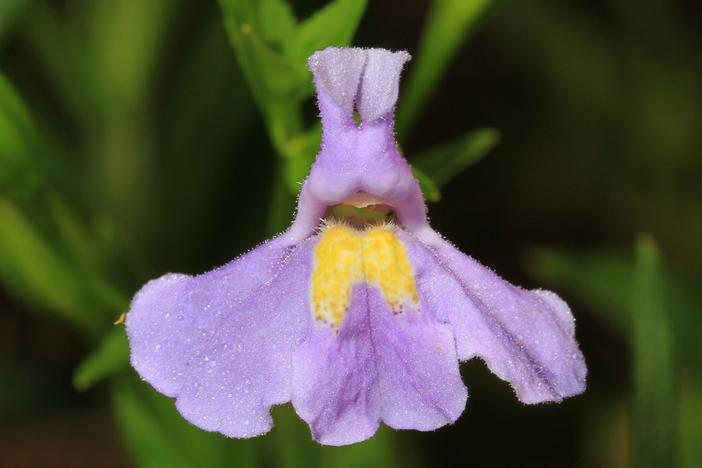Allegheny Monkeyflower
(Mimulus ringens)
Allegheny Monkeyflower (Mimulus ringens)
/
/

Judy Gallagher
CC BY 2.0
Image By:
Judy Gallagher
Recorded By:
Copyright:
CC BY 2.0
Copyright Notice:
Photo by: Judy Gallagher | License Type: CC BY 2.0 | License URL: https://creativecommons.org/licenses/by/2.0/ | Uploader: Judy Gallagher | Publisher: Flickr
























































































Estimated Native Range
Summary
Mimulus ringens, commonly known as Allegheny Monkeyflower, is a deciduous perennial herb native to wetland areas such as stream banks, pond edges, and marshes in the Eastern United States and Southeast Canada. It typically grows 20 centimeters to over a meter in height, with a 4-angled stem that is usually erect. The plant features lavender flowers, each 2 to 3 centimeters long, with a tubular base enclosed by a ribbed calyx of sepals with pointed lobes. The flowers, which bloom from June to September, are divided into an upper lip and a larger, swollen lower lip, and are quite showy, attracting pollinators such as bees and butterflies.
Allegheny Monkeyflower is appreciated for its ornamental flowers and its ability to thrive in wet conditions, making it suitable for rain gardens, water features, and naturalized wetland plantings. It is also used for erosion control along waterways due to its rhizomatous growth habit. This plant prefers consistently moist to wet soils and can tolerate occasional flooding. It is adaptable to both full sun and part shade, which makes it versatile for various garden settings. While generally low-maintenance, it can be susceptible to rust and powdery mildew in crowded or poorly ventilated conditions.CC BY-SA 4.0
Allegheny Monkeyflower is appreciated for its ornamental flowers and its ability to thrive in wet conditions, making it suitable for rain gardens, water features, and naturalized wetland plantings. It is also used for erosion control along waterways due to its rhizomatous growth habit. This plant prefers consistently moist to wet soils and can tolerate occasional flooding. It is adaptable to both full sun and part shade, which makes it versatile for various garden settings. While generally low-maintenance, it can be susceptible to rust and powdery mildew in crowded or poorly ventilated conditions.CC BY-SA 4.0
Plant Description
- Plant Type: Herb
- Height: 1-3 feet
- Width: 0.8-1 feet
- Growth Rate: Moderate
- Flower Color: Blue, Pink, Purple
- Flowering Season: Summer, Fall
- Leaf Retention: Deciduous
Growth Requirements
- Sun: Full Sun, Part Shade
- Water: Medium, High
- Drainage: Slow, Medium
Common Uses
Bee Garden, Bird Garden, Border Plant, Butterfly Garden, Deer Resistant, Hummingbird Garden, Low Maintenance, Showy Flowers, Water Garden
Natural Habitat
Wetland areas such as stream banks, pond edges, and marshes
Other Names
Common Names: Allegheny Monkey-Flower, Lavender Musk, Square-Stemmed Monkeyflower, Blaue Gauklerblume, Mimule Ringent, Mimule À Fleurs Entrouvertes, Blå Gyckelblomma
Scientific Names: , Mimulus ringens, Mimulus minthodes, Mimulus ringens var. minthodes, Mimulus ringens f. ringens, Mimulus ringens var. congesta, Mimulus acutangulus, Mimulus pallidus, Mimulus pteropus, Mimulus ringens f. albiflorus
GBIF Accepted Name: Mimulus ringens L.